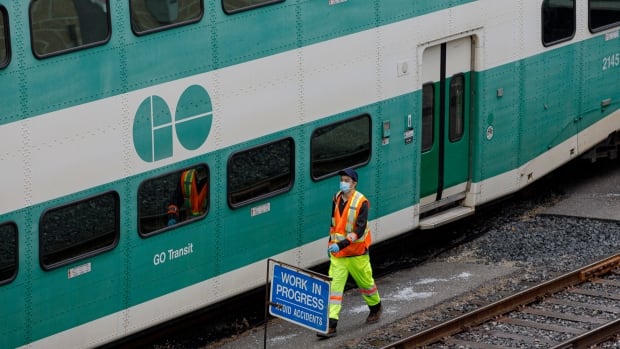
How is ridership aboard London's new GO Train after 6 months? It's complicated
CBC
Ontario's regional transit agency says it's difficult to gauge the success of the first six months of its recently-launched pilot program offering commuter rail service between London, Ont., and Toronto because of the profound chilling effect the pandemic has had on public transit ridership.
Metrolinx launched its London GO Train pilot program in October 2021. The route connects London to Toronto via St Mary's and Stratford.
Between its launch and February 2022, the agency says it sold 6,369 tickets, with 55 per cent of riders travelling from London to Toronto, 38 per cent from Stratford to Toronto and 16 per cent from St Mary's to Toronto.
Metrolinx spokesperson Anne-Marie Aikins said Thursday that because the pandemic has upended the normal rhythms of life by introducing remote and hybrid offices, it will take more time to understand how the new London route is performing under normal circumstances and, for that matter, what "normal" will be going forward.
"It's very interesting times in our industry," said Aikins. "We still aren't back to our normal ridership to give the pilot a really good test under normal circumstances, so that's going to take a while.
"It's too soon to draw any conclusions."
Before the pandemic, GO Transit was shuttling some 271,000 people in and out of the orbit of the GTA in 2019, the largest number ever recorded for the agency. However, with the health crisis now in its third year, Metrolinx says commuter ridership has dropped to 35 per cent of its pre-pandemic levels.
"We were constantly breaking our own records," said Aikins. "That was the before days. Now we're in this unusual period of time where we believe it will take a year, two years or more to recover."
Aikins said because the virus has made everything unpredictable, Metrolinx didn't give the London pilot program a solid end date.
"We didn't know how long we would need to give it a good test run," she said.
While numbers might be small compared to other, more established commuter rail routes within the Metrolinx system, they are steady, particularly among people commuting between London, Stratford and St Mary's for work.
"Some people are traveling in between the communities and that's part of what we envisioned," she said. "People often work in London but they live in Stratford or St Marys."
Aikins said part of what drew Metrolinx to creating a GO Train connecting London and Toronto is the sheer number of families who are leaving the big city for southwestern Ontario.
Toronto has recently become London's biggest feeder city, a phenomenon that combined with increased international migration, has quickly turned London into the fastest-growing city in the province.





















 Run 3 Space | Play Space Running Game
Run 3 Space | Play Space Running Game Traffic Jam 3D | Online Racing Game
Traffic Jam 3D | Online Racing Game Duck Hunt | Play Old Classic Game
Duck Hunt | Play Old Classic Game











